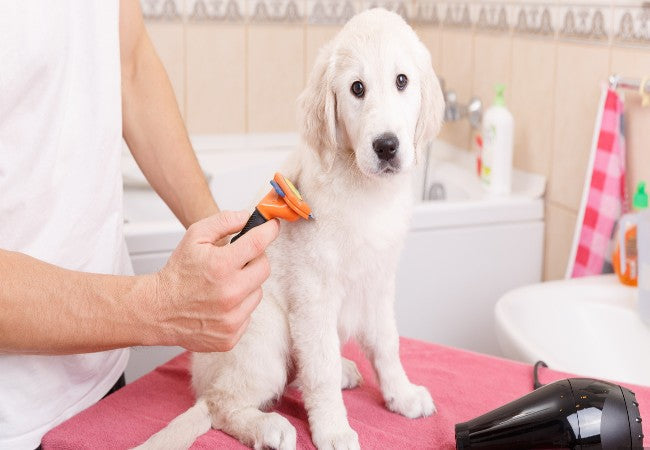Vet Guide to Dog Dandruff & Dry Skin 2025 🐶🩺

In this article
Vet Guide to Dog Dandruff & Dry Skin 2025🐶🩺
By Dr. Duncan Houston BVSc
Dandruff in dogs—also known as seborrheic dermatitis—means excessive flaking of skin cells. Causes range from simple dry skin to allergies, parasites, infections, hormonal issues, or genetic seborrhea. This 2025 guide explains symptoms, dermatologist‑verified diagnosis, home treatments, medicated care, and prevention strategies. 💡
⚠️ Common Causes
- Dry air/winter: Central heating depletes moisture in the skin.
- Nutrition/hydration issues: Low essential fatty acids or water intake.
- Allergies: Environmental or food allergies trigger flaky, itchy skin.
- Parasites, Mites like Cheyletiella (“walking dandruff”), fleas, or Demodex, worsen flaking.
- Infections: Bacterial or fungal overgrowth may cause dandruff.
- Hormonal/endocrine issues: Hypothyroidism, sebaceous adenitis, or seborrhea cause chronic scaling.
👀 Signs & When to Vet
- White or oily flakes on fur and furniture, especially around the back and tail.
- Accompanying signs: itching, hair loss, odor, skin redness, scabs, hot spots.
- Vet visit is needed if flakes persist despite home care, or signs suggest infection or parasites.
🔬 Diagnosis
- Skin exam plus history to identify patterns.
- Skin scrapes/tape to detect mites like Demodex or Cheyletiella.
- Cytology/cultures to rule out bacterial/fungal infections.
- Blood tests if endocrine disease or seborrhea is suspected.
💊 Treatment & Home Management
- Grooming: Regular brushing removes flakes and distributes skin oils.
- Bathing: Use dog‑safe, oatmeal or seboregulating shampoos (e.g., Douxo S3 Seb shampoo).
- Topicals: Coconut or fish oil, apple cider vinegar rinses for mild cases.
- Supplements: Omega‑3/6 and vitamin E support skin health.
- Humidifier: Especially helpful during dry seasons.
- Medicated shampoos: For seborrhea, yeast/bacterial infections—use under vet supervision.
🏥 Veterinary Treatments
- Parasite control: Topicals/orals for mites or fleas.
- Medications: Antibiotics or antifungals for infections.
- Hormonal therapy: Treat underlying hypo‑ and sebaceous disorders.
- Chronic management: Lifelong care planning for persistent seborrhea.
🛡️ Prevention & Long-Term Care
- Maintain a balanced, high‑quality diet and good hydration.
- Seasonal grooming and humidifier use.
- Regular parasite prevention.
- Monitor skin and coat at home for early warning.
- Vet follow‑up if flakes, odor, or scratching increase over baseline.
✅ Dr Houston’s Tips
- Brush weekly and bathe with gentle, dog‑formulated shampoo.
- Check water dish location—avoid turf, dirt, and sap that irritate skin.
- Before adding supplements, consult Ask A Vet about dosage & safety.
- If oil or yeast signs appear, a vet visit is warranted.
If your dog has noticeable flakes, itching, odor, or scabs—especially if flakes persist after grooming—connect via AskAVet.com for an expert skin evaluation. Track grooming, baths, supplements, symptoms,🐾❤️






